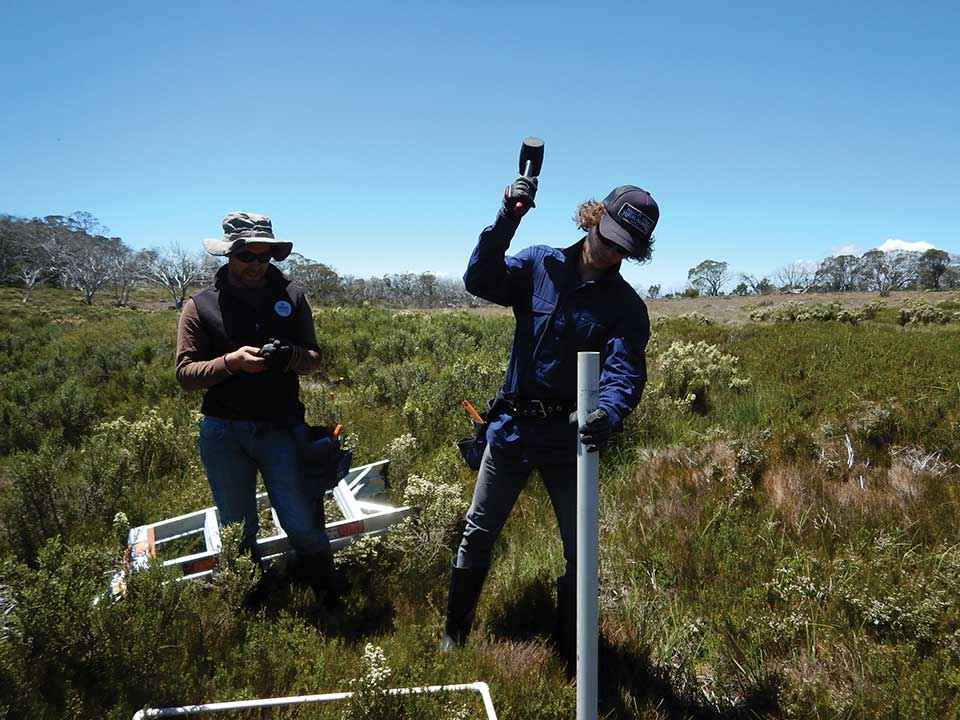Victorian Landcare Magazine - Winter 2017, Issue 69

As the impacts of climate change are becoming increasingly apparent, wetlands are drawing more and more attention for their vast potential to capture atmospheric carbon.
Until recently investigations of the carbon sequestration capacity of wetlands have concentrated on coastal or blue carbon wetlands. But in fact, estimates identify inland wetlands as the earth’s largest store of terrestrial carbon.
Deakin University, DELWP and Victoria’s 10 CMAs are collaborating on a comprehensive investigation of the carbon stocks of inland wetlands in an effort to understand their carbon sequestration capacity. More than 100 sites were sampled – the largest carbon sampling effort ever undertaken within Victoria.
The project found that Victoria’s wetlands are storing substantial amounts of carbon, with a total carbon stock of 68 million tonnes of organic carbon estimated for the depths sampled. The estimated carbon sequestration of Victoria’s wetlands is 3,117,682 tonnes of carbon dioxide equivalents per year, equivalent to the carbon dioxide emissions of 176,538 Australians.
Put another way, every year Victoria’s wetlands sequester enough carbon dioxide to offset the emissions from 659,129 cars. On a smaller scale, one hectare of the wetlands in Barmah National Park sequesters enough carbon to offset the emissions from 780 light globes.
The project also found that different wetland types are storing carbon differently. Permanent open freshwater wetlands had the lowest carbon stocks, freshwater meadows and shallow freshwater marshes were in the mid-range, and the highest carbon stock values were in alpine peatlands.
Disturbance and loss of wetlands has a potential to release significant quantities of carbon dioxide back into the environment. Since European settlement, the loss of wetlands has released an estimated 22.5 million to 74.2 million tonnes of carbon dioxide equivalent, depending on the emission factor applied. (Carbon dioxide equivalent refers to the conversion of organic carbon, to the equivalent amount of carbon dioxide.)
Now that we have a good understanding of the carbon stored in the soil of these wetlands across Victoria, the next phase of the research is to gain a complete picture of these systems by measuring emissions of carbon dioxide, methane and nitrous oxide. This will allow researchers and natural resource managers to fully determine opportunities for carbon offsetting and climate change mitigation through inland wetlands.
Kate Brunt is a Senior Project Officer – Climate Change at the Goulburn Broken CMA.
Dr Paul Carnell is a Research Fellow at the Blue Carbon Lab at the Centre for Integrative Ecology at Deakin University.
For further information go to www.bluecarbonlab.org or contact Kate at katebr@gbcma.vic.gov.au
"Every year Victoria’s wetlands sequester enough carbon dioxide to offset the emissions from 659,129 cars."